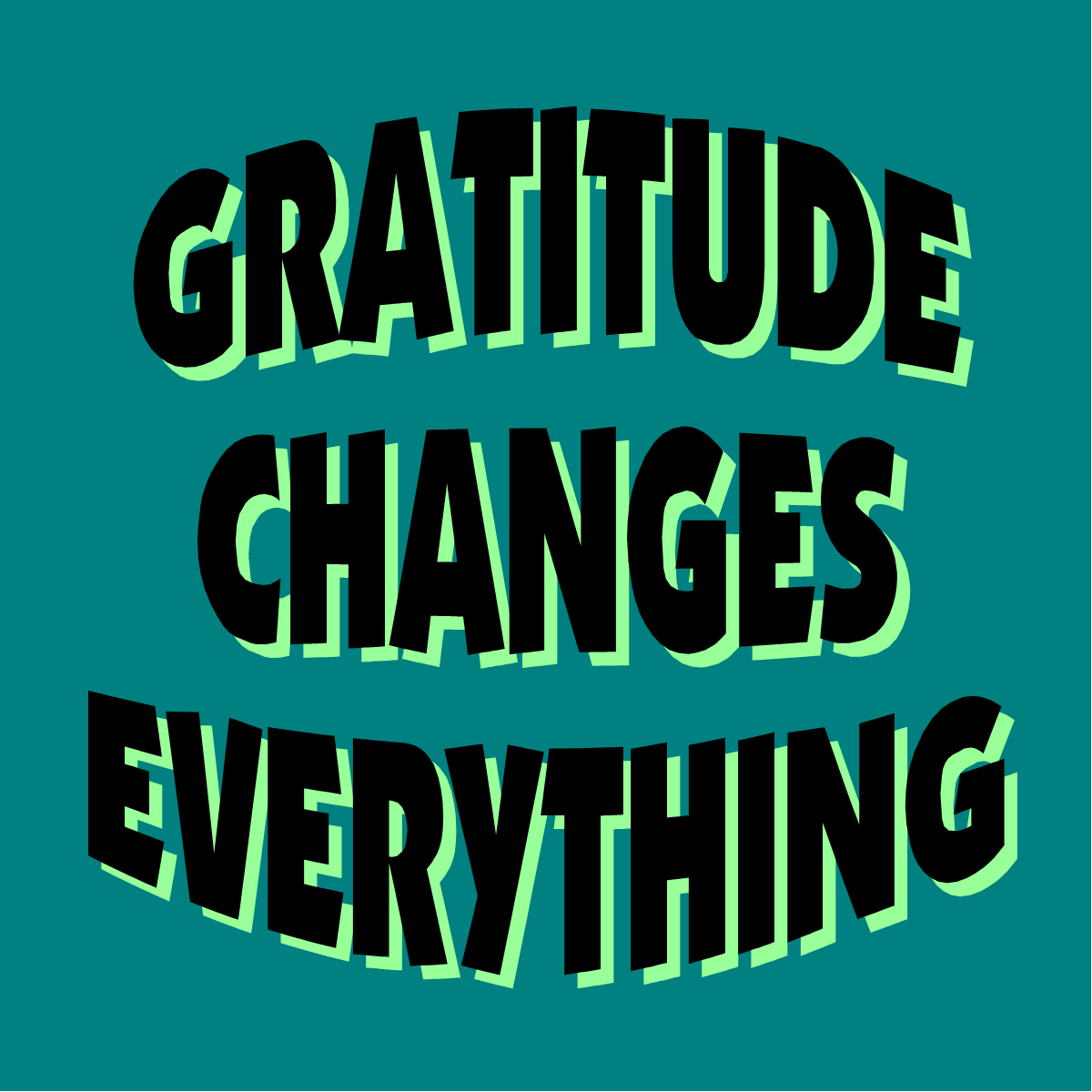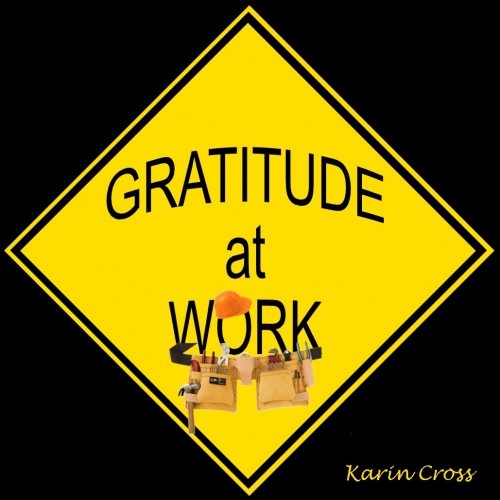When consultant Stephanie Pollack was brought in to work with the state chapter of a national nonprofit, morale was low. The organization was in the middle of a transformation that brought in new leadership, a new culture, new rules—and lots of tension and uncertainty.
Her task? To teach appreciation and gratitude.

Over the course of a three-day retreat, she taught a small group of reluctant employees about the benefits of recognizing the good things in their lives and saying thank you. And something shifted. After one person wrote a genuine note of thanks on an “appreciation wall,” soon everyone was participating.
But what really surprised Pollack was the connection and authenticity that appreciation seemed to inspire. At the end of the retreat, some of the more closed-off employees opened up about the feelings and past experiences that had created their hard shells.
“They walked in with a lot of tension and frustration,” Pollack recounts. “I’m not saying they walked out with none, but there was a willingness on everyone’s part to move forward together in a different way.”
The practice of gratitude—and its close sibling, appreciation—has started to infiltrate workplaces, from new software companies to older institutions like Campbell Soup, whose former CEO wrote 30,000 thank you notes to his employees. Though research on gratitude has exploded over the past two decades, studies of gratitude at work are still somewhat limited; results so far link it to more positive emotions, less stress and fewer health complaints, a greater sense that we can achieve our goals, fewer sick days, and higher satisfaction with our jobs and our coworkers.
While expressing thanks to colleagues might feel awkward or even at odds with some workplace cultures, many organizations have been developing innovative ways to overcome those barriers. Building on—and even getting out in front of—the existing research on gratitude at work, their efforts have identified concrete and important strategies for putting this research into practice. Their experiences suggest that building cultures of gratitude and appreciation can transform our work lives, leading to deeper connections to each other and to the work we’re doing.
Why gratitude is so revolutionary
Researchers define appreciation as the act of acknowledging the goodness in life—in other words, seeing the positives in events, experiences, or other people (like our colleagues). Gratitude goes a step further: It recognizes how the positive things in our lives—like a success at work—are often due to forces outside of ourselves, particularly the efforts of other people. But this kind of thinking can seem countercultural in the realm of hierarchies and promotions, where everyone is trying to get ahead and may be reluctant to acknowledge their reliance on—or express emotions to—their co-workers.
“We tend to think of organizations as transactional places where you’re supposed to be ‘professional,’” says Ryan Fehr, an assistant professor of management at the University of Washington, Seattle, who recently published a paper summarizing the landscape of gratitude in business. “We may think that it’s unprofessional to bring things like forgiveness or gratitude or compassion into the workplace.”
Yet evidence suggests that gratitude and appreciation contribute to the kind of workplace environments where employees actually want to come to work and don’t feel like cogs in a machine.
Appreciation is a cornerstone of the culture at Southwest Airlines, named by Forbes as America’s #35 Best Employer of 2017. One way the company appreciates employees is by paying attention to special events in their personal lives—from kids’ graduations to marriages to family illnesses—and recognizing those with small gestures like flowers and cards. “We’re all encountering different obstacles in our life, we’re all celebrating different things in our life,” says Cheryl Hughey, managing director of culture at Southwest.
Southwest seems to understand what research has shown: that gratitude tends to emerge in workplaces with more “perceived organizational support,” where employees believe that the company values their contributions and cares about their well-being. And caring means valuing employee health and happiness for their own sake, not just as a way to eke out longer work hours and greater productivity.
“[Gratitude is] going to make your business more profitable, you’re going to be more effective, your employees will be more engaged—but if that’s the only reason you’re doing it, your employees are going to think you’re using them,” says Steve Foran, founder of the program Gratitude at Work. “You have to genuinely want the best for your people.”
Gratitude as a “gateway drug”

Gratitude isn’t the only emotional skill that could be valuable to the modern business. We might also hope to build emotionally intelligent and empathic workplaces, where employees practice compassion and forgiveness.
But gratitude could be a pathway to these (arguably more difficult) goals, according to Peter Bonanno, director of program development at the Search Inside Yourself Leadership Institute (SIYLI), a nonprofit that offers training in mindfulness and emotional intelligence to individuals and teams. Bonanno has found that, to most people, practicing gratitude is appealing, practical, feel-good, and fun. One study, for example, found that gratitude journaling for as little as 15 minutes was enough to boost positive emotions.
“I see gratitude as a gateway drug to empathy in that it’s very positive, it’s easy to get started with,” Bonanno says. Being grateful to someone who has helped you means that you recognize the intentions and effort behind their actions, which is good practice for the “putting yourself in someone else’s shoes” involved in empathy.
At SIYLI retreats, Bonanno often leads a 10-minute gratitude meditation. Participants think of someone they want to appreciate, then focus on how they were impacted by that person and what their gratitude feels like. Afterward, they’re invited to send the person a text message expressing their thanks.
“It’s a total heart-opener,” says Bonanno. “A lot of people have said that it’s helped them to open up a conversation that they’ve needed to have with a business partner or a spouse, something they’ll been holding in, something they’ve been putting off.”
In another workshop, Bonanno saw the power of gratitude to promote kindness and generosity. Some of the participants at a large technology company experienced feelings of guilt during a gratitude practice: Focusing on the good in their lives made them recognize all their privileges—enviable jobs, fun benefits, high salaries. After sharing and discussing these feelings, they left the workshop vowing to find ways to give back to people who weren’t so fortunate.
That’s an outcome you might expect from practicing gratitude: Studies show that grateful employees are more concerned about social responsibility, for example. Grateful employees—as well as employees who receive more gratitude—also perform more “organizational citizenship” behaviors: kind acts that aren’t part of their job description, like welcoming new employees and filling in for coworkers.
In fact, gratitude and kindness seem to form a positive loop in the workplace. Just as gratitude leads to altruistic behavior, research suggests that the opportunity to help others and serve a cause is one of the major sources of gratitude at the office.
Four keys to gratitude at work
Of course, not all attempts to introduce gratitude into the workplace result in heartfelt revelations or acts of generosity.
There are many reasons why gratitude initiatives might not go over well: As Steve Foran suggested, they may come off as insincere, a token nod to employee well-being that can be advertised in corporate brochures. Some people may be wary of expressing gratitude and acknowledging their debt to others, seeing it as a sign of weakness. Even if the program is generally well-received, some employees could feel left out if they rarely receive gratitude or recognition. And of course, in the busy modern workplace, programs to foster gratitude and appreciation could feel like one more thing that employees don’t have time for.
1. Gratitude is about the whole person
According to author and consultant Mike Robbins, some gratitude initiatives fail to do anything new: They simply repurpose recognition programs, which have existed for a long time. Recognition rewards performance and achievement—what you accomplish as a worker—whereas appreciation acknowledges your inherent worth as a person, he says. It’s the difference between celebrating record-breaking sales vs. applauding a caring and helpful spirit.
“Appreciation is about people and their value,” says Robbins, whose forthcoming book is called Bring Your Whole Self to Work. “You create an environment where people feel valued and appreciated for who they are, not just what they do.”
In one of his favorite exercises, employees take turns sitting in the “appreciation hot seat,” and others go around a circle expressing appreciation for them. People start off hesitant, feeling awkward and a bit vulnerable, he says, but the experience often ends in laughter and hugs—not because they’re praising successful business deals or admirable reports, but because they’re getting at something deeper.
2. Gratitude isn’t one-size-fits-all
Another common pitfall when companies introduce gratitude is assuming that everyone wants to be appreciated in the same way. Pollack likens appreciation to love languages: Each individual’s language of appreciation is different, and we risk miscommunication if we assume everyone likes to receive a card, a coffee, or public praise. She has compileddozens of different gratitude practices to try at work, from surprise care packages to appreciation badges to a celebration calendar.
Similarly, Pollack says, we all want to be appreciated for different things because we’re all different. Workplaces can bring together diverse people with different types of communication styles, backgrounds, and expertise, and it’s our job to recognize our colleagues’ strengths even if those strengths are different from our own. I feel valued for my passion for self-improvement and personal growth, for example, even though my fellow journalists have other specialties.
“The key is that there are things to learn from each other,” Pollack says. “Instead of being frustrated, it’s celebrating that, ‘Oh that person actually is seeing something I wouldn’t see in the same way.’ So we can learn how to appreciate that.”
3. Gratitude must be embraced by leaders

In a culture that prizes busyness and hard-driving achievement, people can feel guilty and self-indulgent taking the time to meditate at work or keep a gratitude journal. “We are taught that the busier we are, the more successful we’ll be,” says Emmy Negrin, former manager of the Yahoo Employee Foundation and Yahoo for Good. To send a different signal, she invited executives to attend a new mindfulness program at Yahoo in order to show their buy-in for the initiative.
At Southwest, the company used to send out pins to employees who had served the airline for a milestone number of years (like 5 or 10). To better honor their culture of appreciation, though, they now send the pins to leaders and invite them to recognize and celebrate the employee in a special way, transforming gratitude from a faceless gift into a relationship-building experience. In both cases, getting leaders to participate communicates that gratitude and well-being are important.
At the same time, though, gratitude isn’t something you can force. Gratitude will really take hold when it’s also embraced from the bottom-up, when employees take the initiative. SIYLI, for example, doesn’t have a formal gratitude program in their workplace. But since it’s part of their culture, says Bonanno, employees often bring up feelings of gratitude during “check-ins” that take place at the beginning and end of meetings. Communicating the value of gratitude, then offering a variety of opportunities and options for practicing it, may be the best approach. Which brings up the next tip…
4. Gratitude has to be part of the culture
For Fehr at the University of Washington, one of the keys to a successful program is consistency. For example, adding a short gratitude practice to staff meetings or infusing internal communications with gratitude keep it top-of-mind. Employee awards once a year won’t cut it, he says.
“Ultimately, it’s about creating an organizational culture around gratitude,” says Fehr. “Organizations need to, as a baseline, treat their employees well, and then on top of that the organization also needs to develop programs that help them see all of these positives.”
Organizations can’t even assume that an intensive immersion in gratitude, like Pollack’s three-day appreciation retreat, will be enough. Luckily, though, her once-reluctant nonprofit employees understood that. During the six months after participating in the retreat, they worked with her closely to build a culture of gratitude, introducing some appreciation practices into the larger organization. Today, she says, they’re “definitely in a better place.”
“Acknowledging the thoughts and efforts of people with gratitude shows that those people matter,” she says. “When I’ve seen it work, it’s just life-changing.”

 Mar 12,2018
Mar 12,2018














